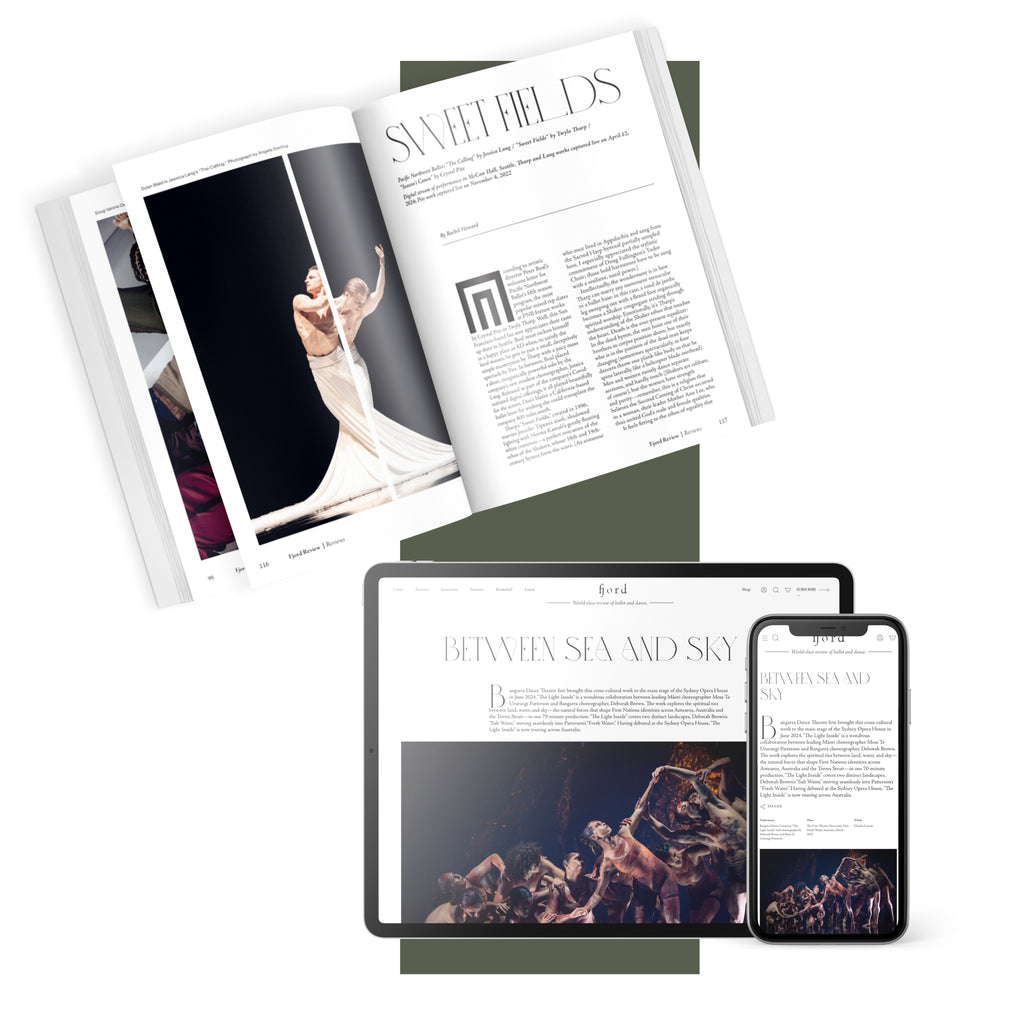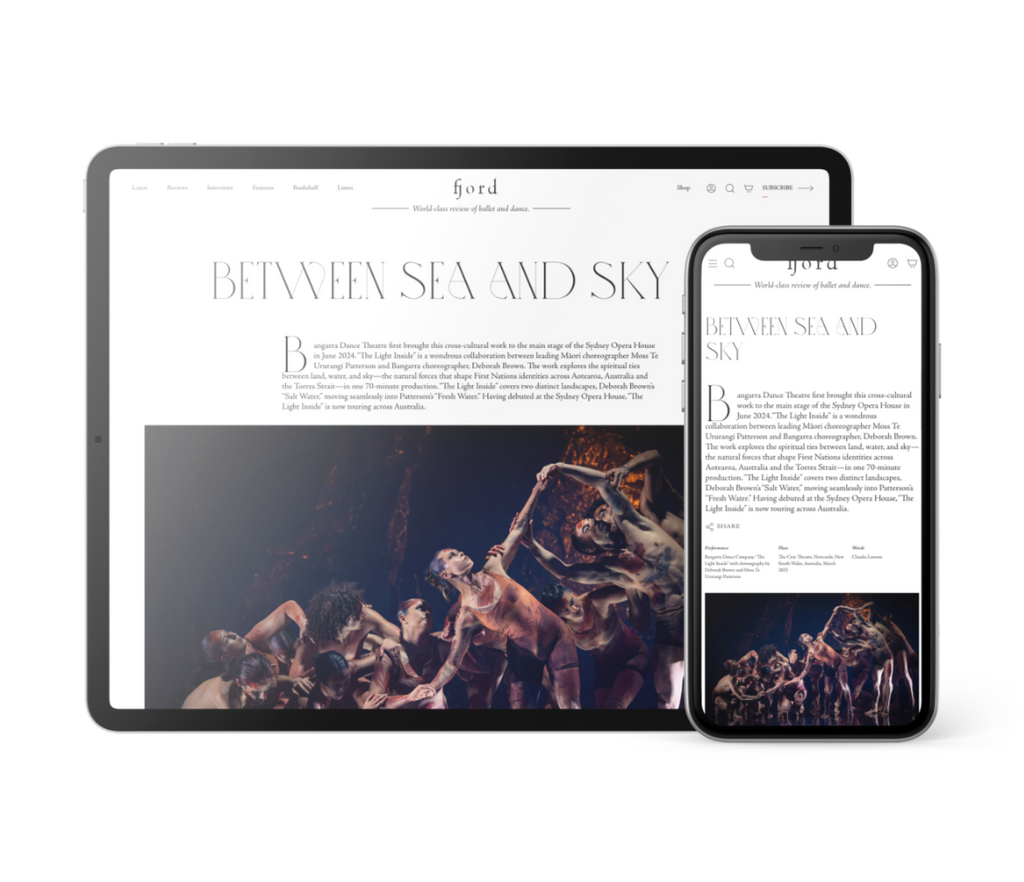Mishima’s Muse
Japan Society’s Yukio Mishima centennial series culminated with “Mishima’s Muse – Noh Theater,” which was actually three programs of traditional noh works that Japanese author Yukio Mishima adapted into modern plays.
Continue Reading
World-class review of ballet and dance.
There’s a small moment in Rena Butler’s new “Cracks” that I think only could have become possible at Pacific Northwest Ballet, which commissioned it. At stage right, two tall dancers, both dressed like Catholic school students in pleated skirts and polo shirts, pas de bourrée and then rebound out of a sissonne into more pointe work. Both dancers have strong, well-shaped feet, compact hips, lyrically expressive torsos, and wide shoulders. Only after a few bars of music could I confirm that the dancers were Elle Macy, who is female-identifying, and Zsilas Michael Hughes, who is gender-nonbinary.
Performance
Place
Words



“Uncommonly intelligent, substantial coverage.”
Your weekly source for world-class dance reviews, interviews, articles, and more.
Already a paid subscriber? Login

Japan Society’s Yukio Mishima centennial series culminated with “Mishima’s Muse – Noh Theater,” which was actually three programs of traditional noh works that Japanese author Yukio Mishima adapted into modern plays.
Continue ReadingThroughout the year, our critics attend hundreds of dance performances, whether onsite, outdoors, or on the proscenium stage, around the world.
Continue ReadingOn December 11th, the Alvin Ailey American Dance Theater presented two premieres and two dances that had premiered just a week prior.
Continue ReadingThe “Contrastes” evening is one of the Paris Opéra Ballet’s increasingly frequent ventures into non-classical choreographic territory.
Continue Reading
comments